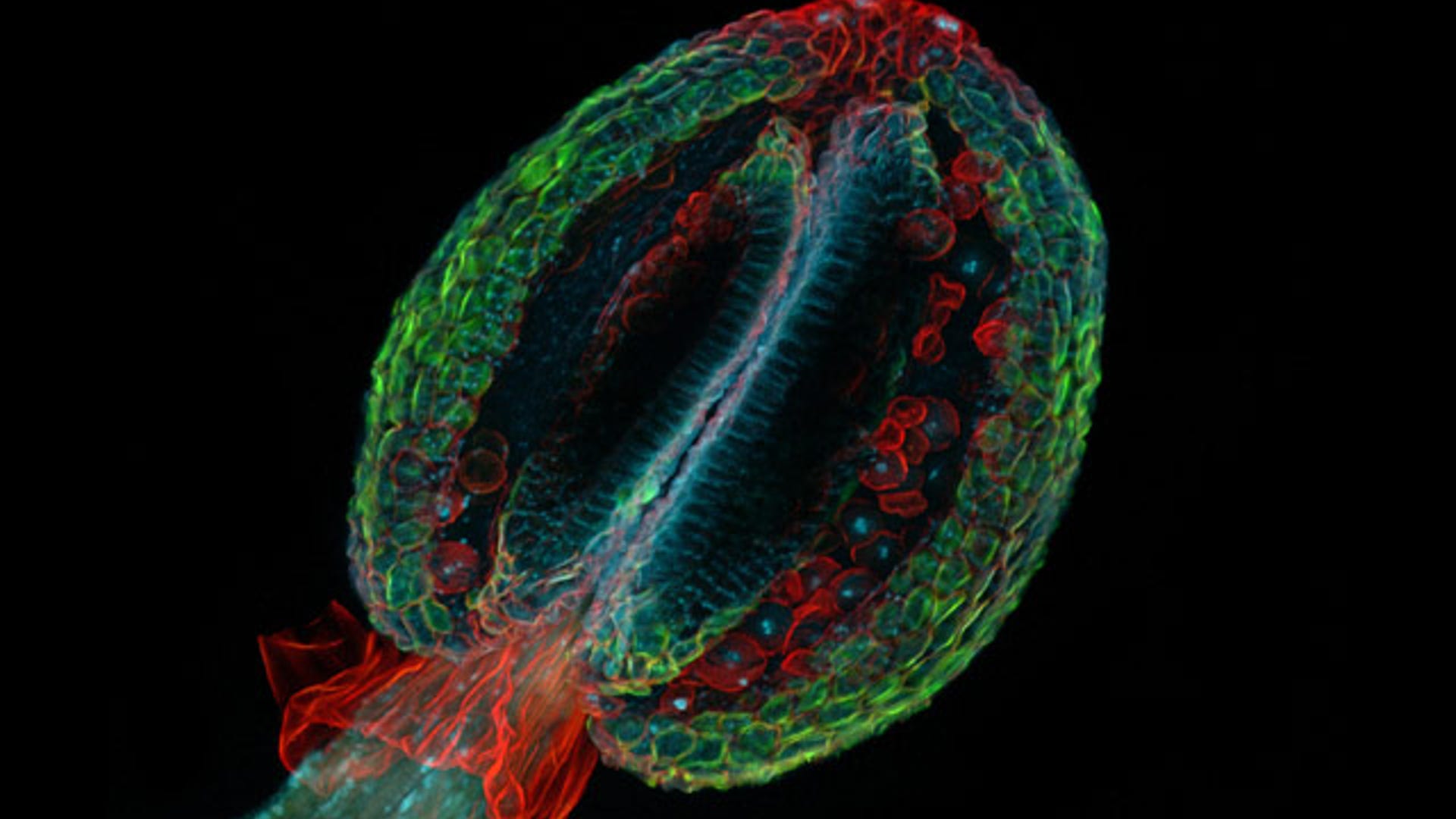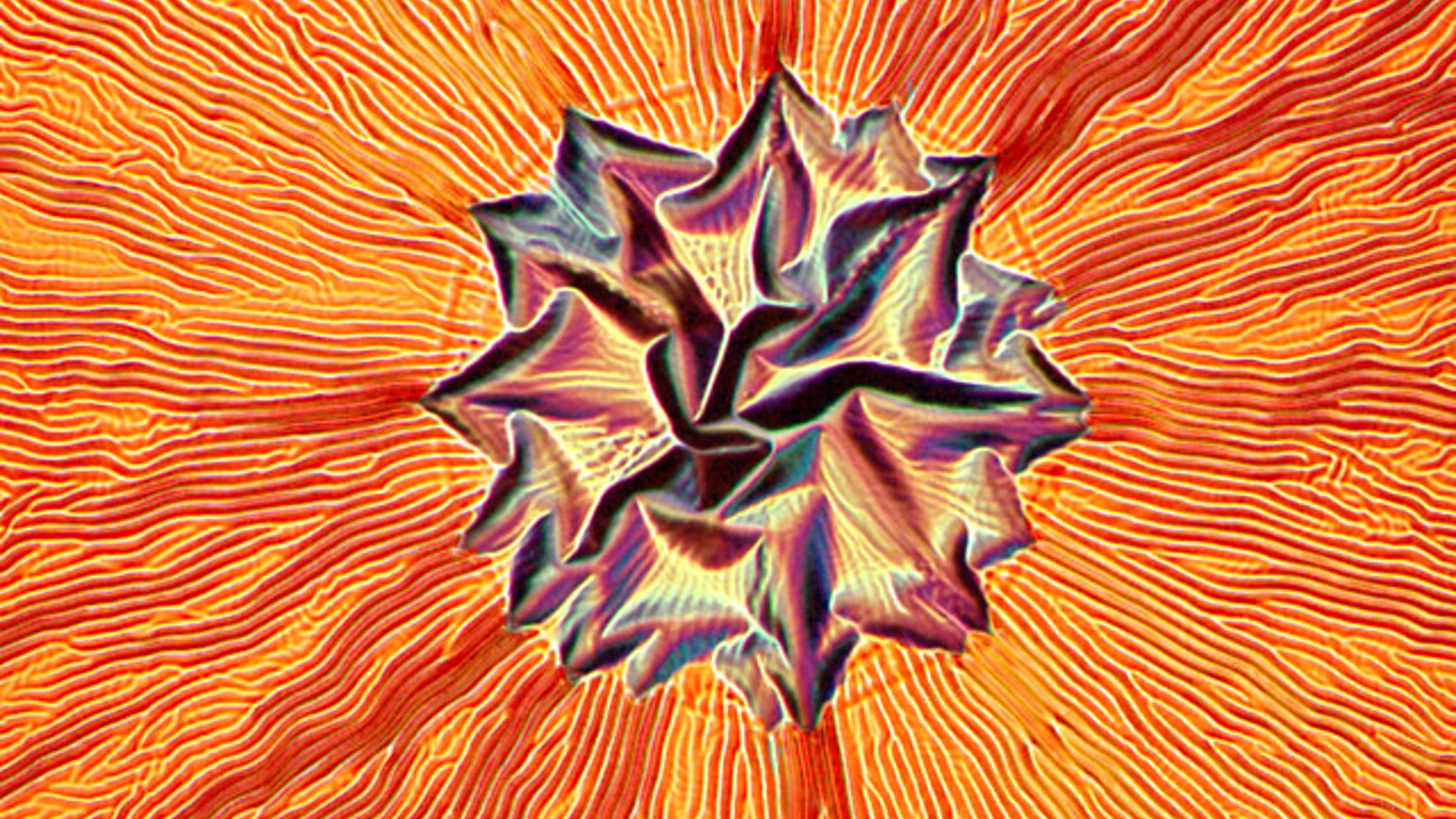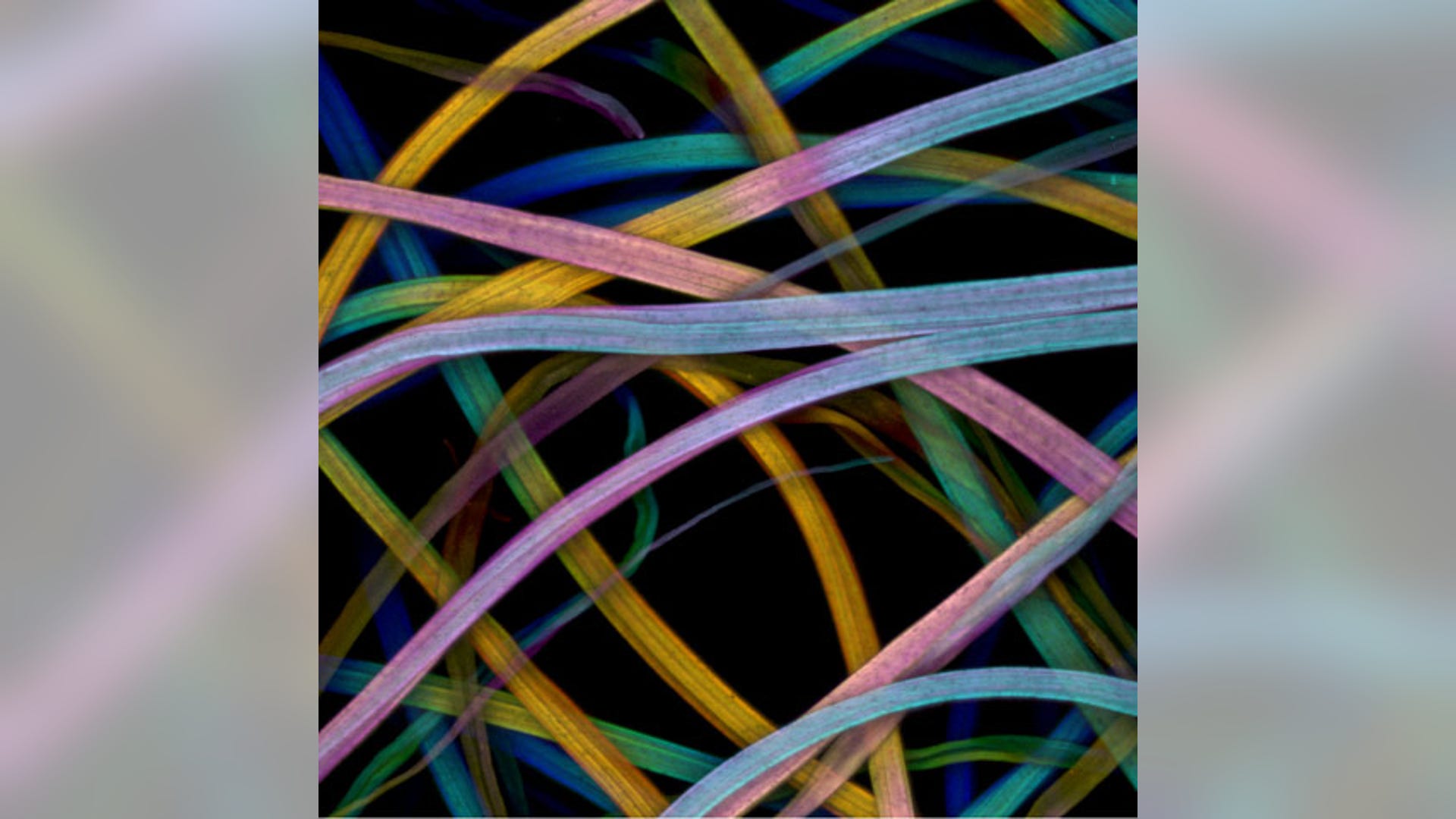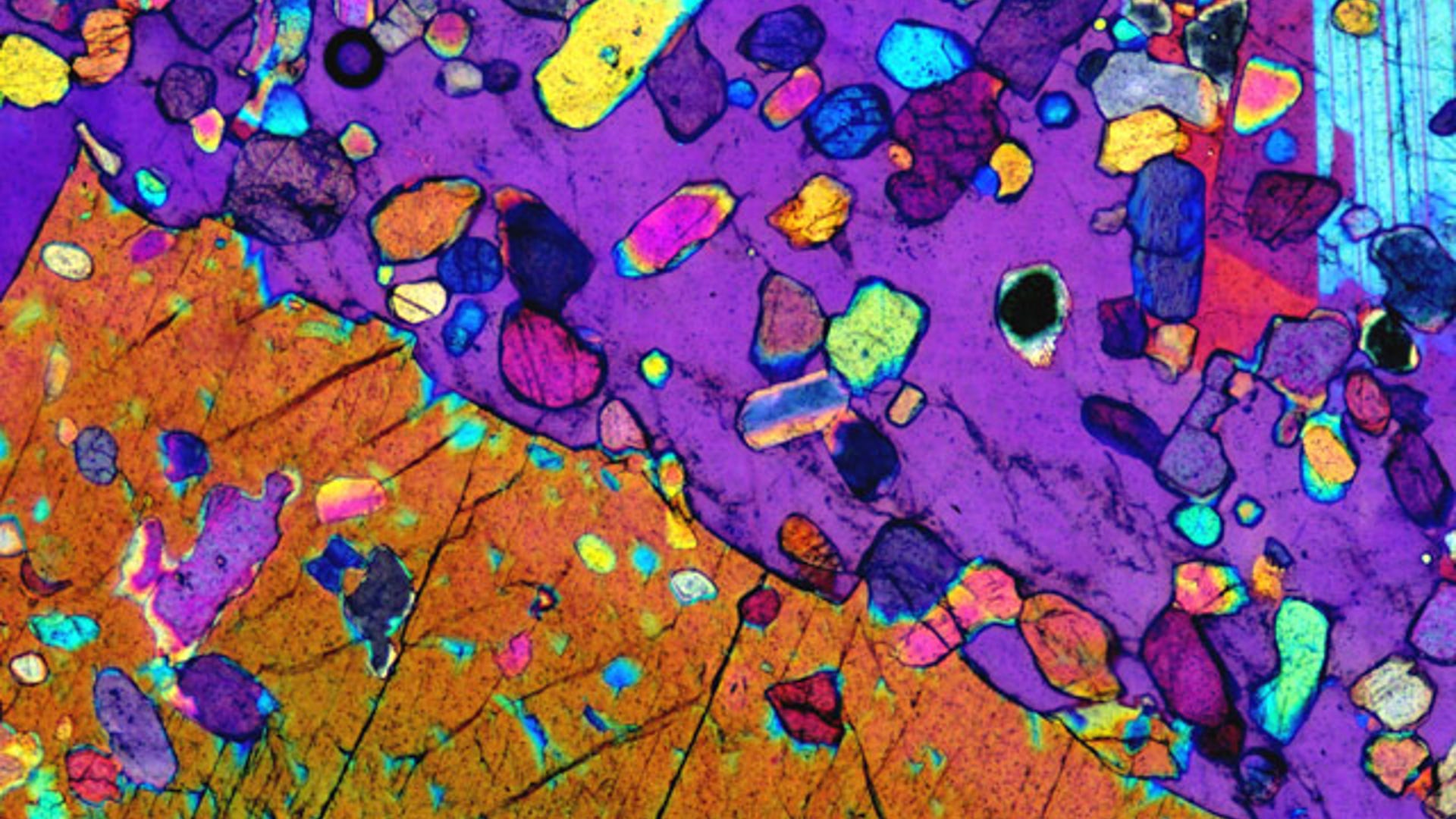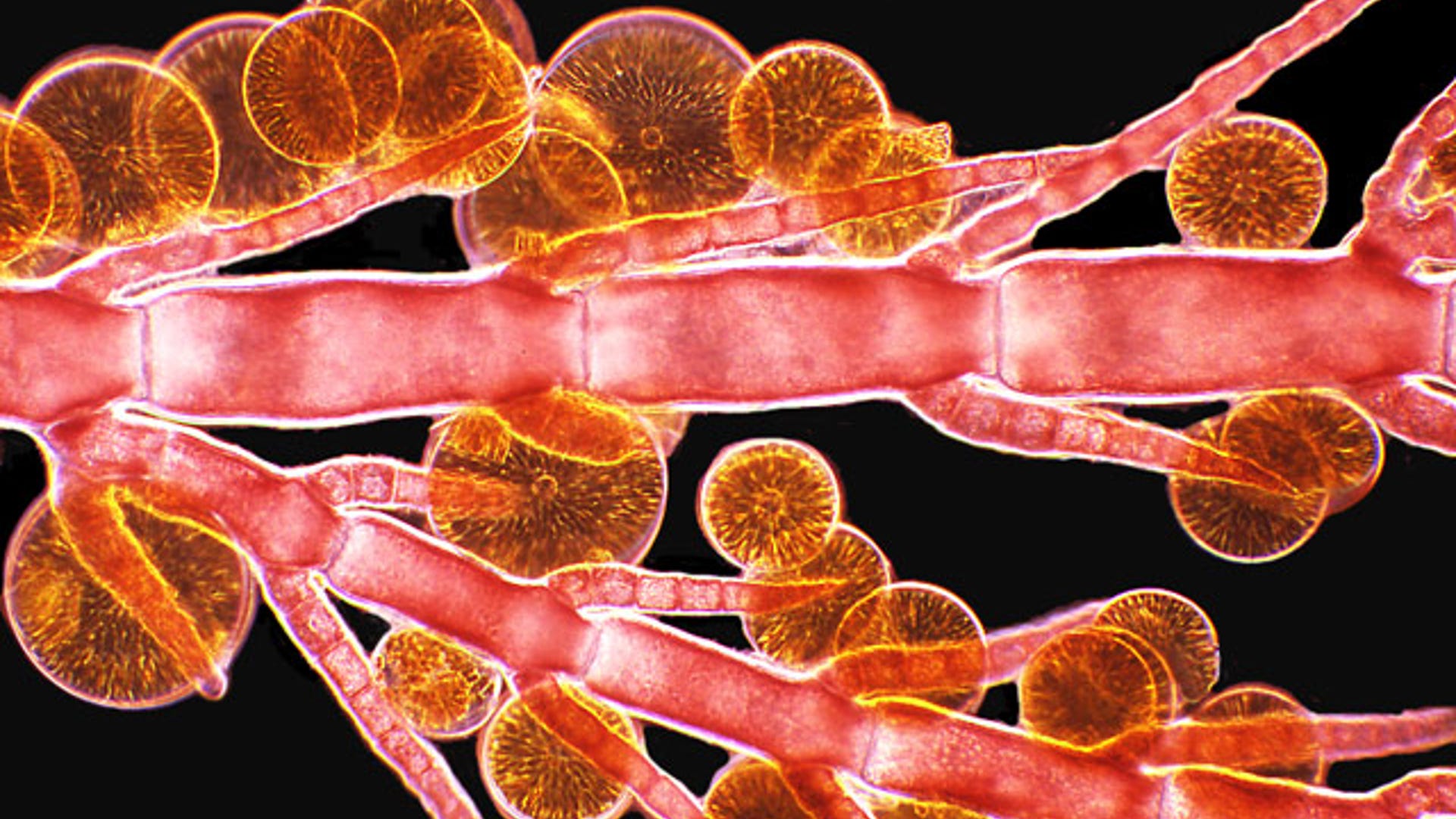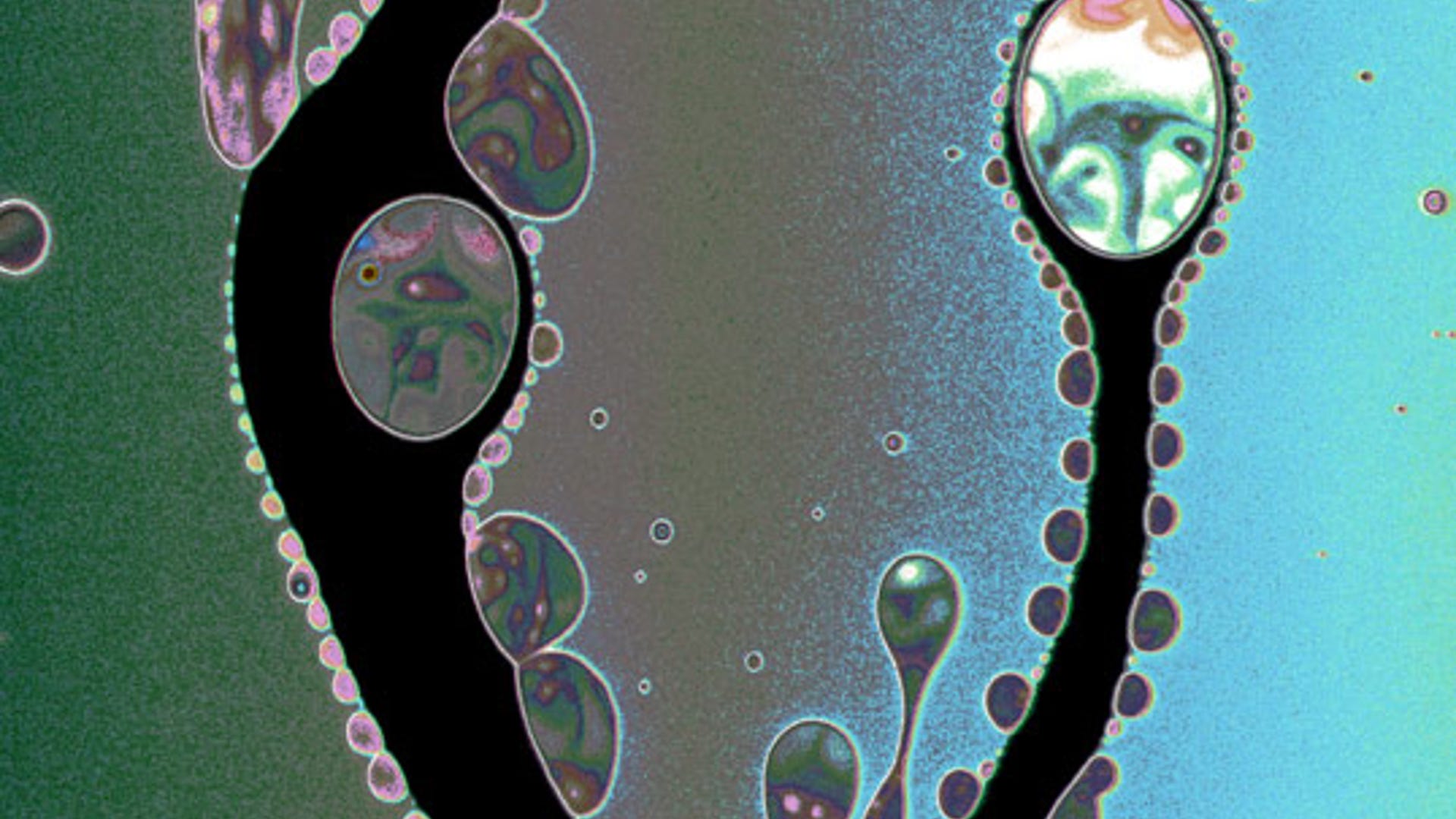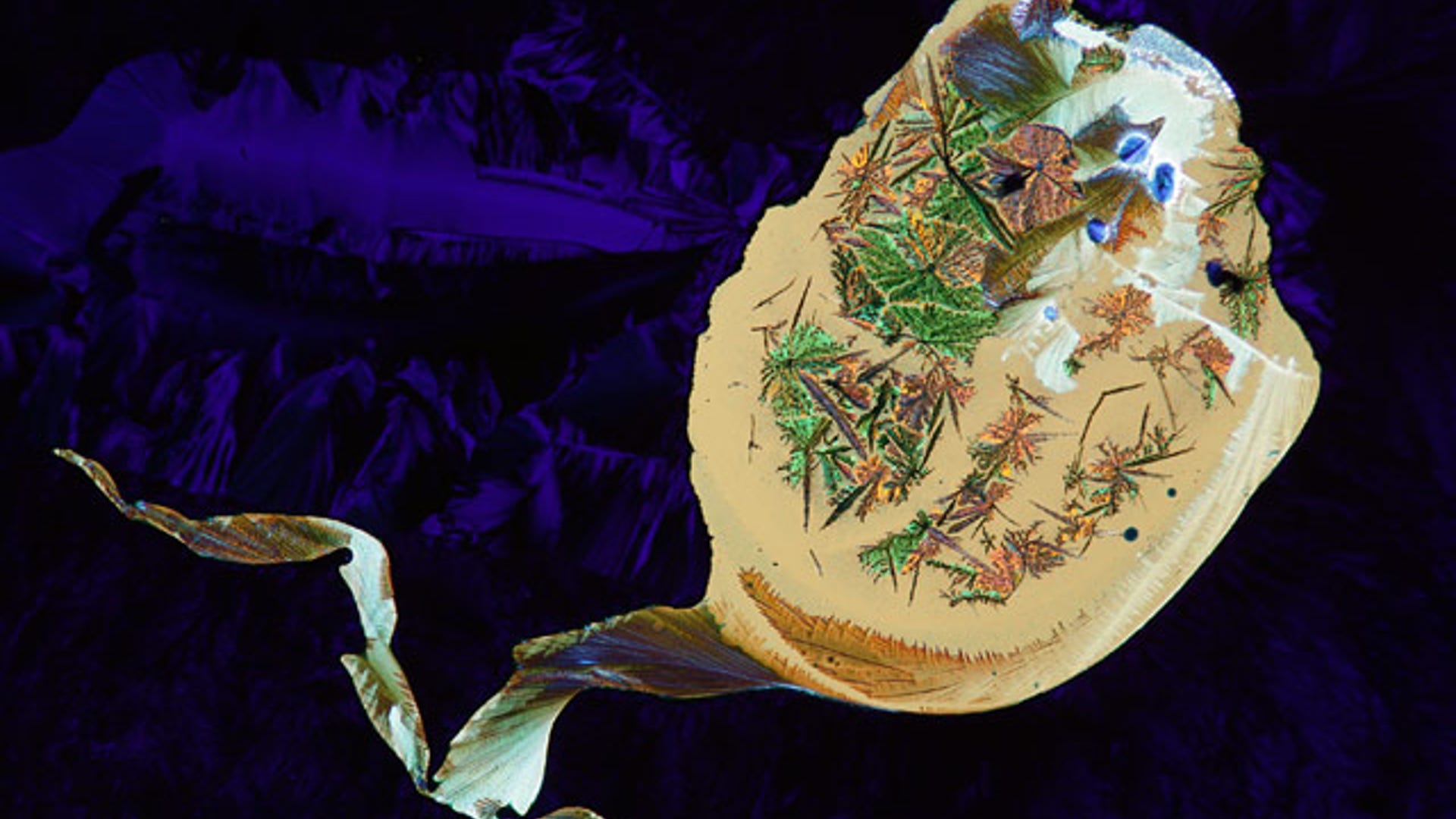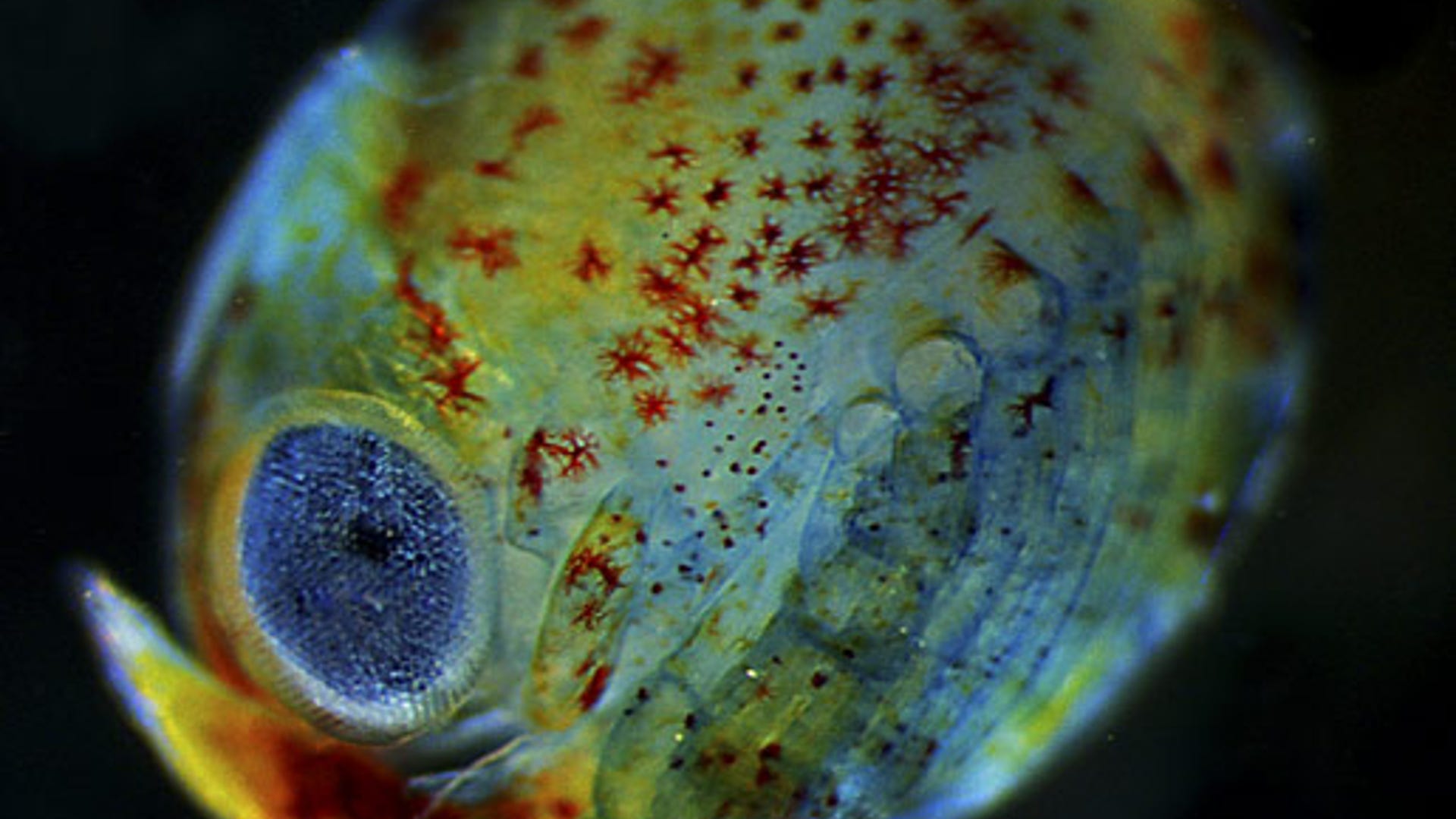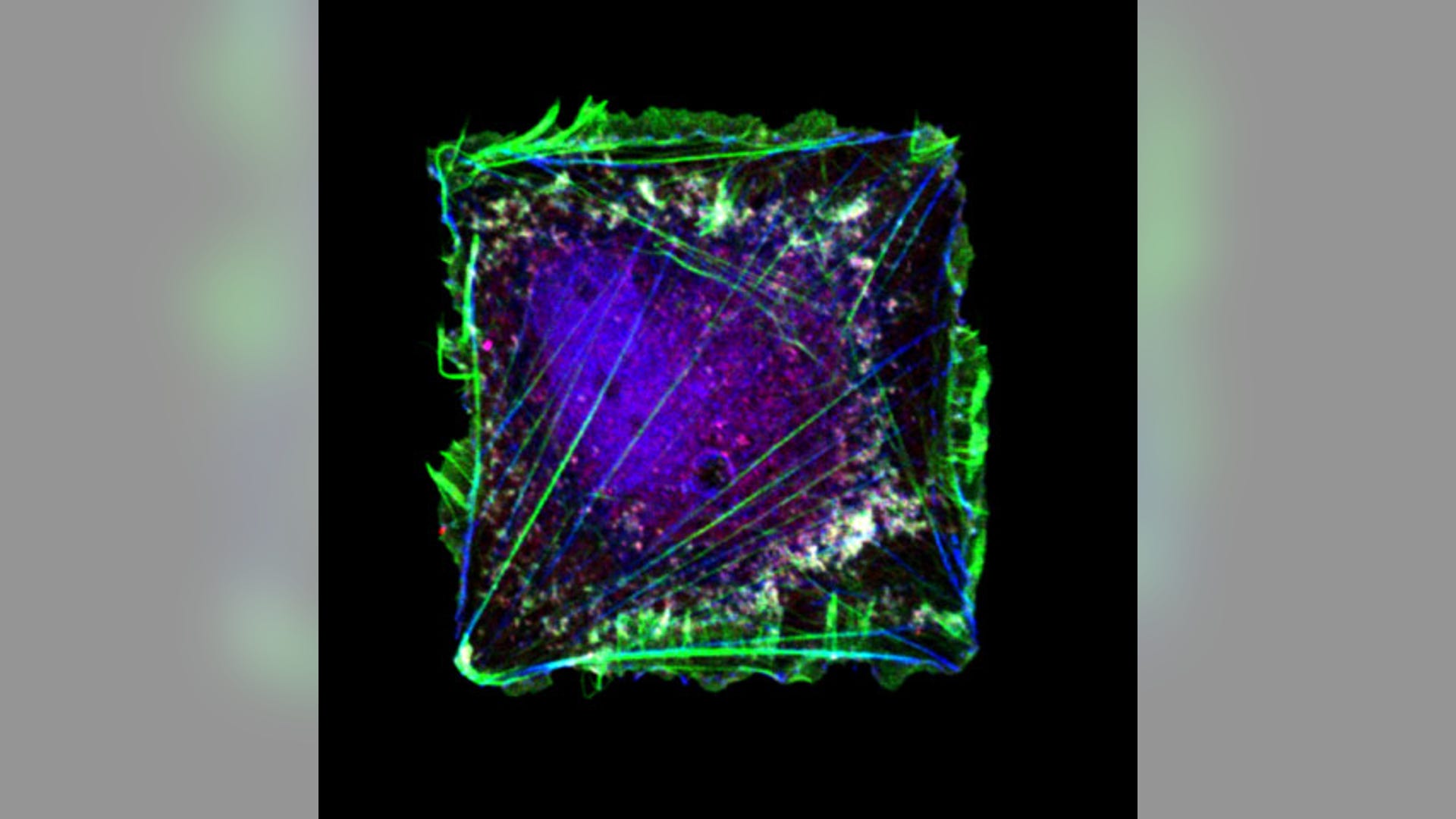Move Back
ADVERTISEMENT
Skip- Published20 Images
Beauty Beneath the Microscope's Lens
Nikon's Small World contest showcases the beauty of life as photographed through a microscope. Here, the winners from 2009's contest.
![1. Thale Cress]() Arabidopsis thaliana is the first plant to have its genome fully sequenced and is commonly used as a model in scientific research. But it was the unusually artistic appearance of the winning shot that inspired photomicrographer and plant biologist Dr. Heiti Paves of the Tallinn University of Technology in Estonia to enter the image into the 35-year-old competition. According to Dr. Paves, besides being "nice-looking plant organs," anthers were a good subject because "they do not move very fast… The picture of my dreams should bring out motility of living cell, like a sports photograph."read moreDr. Heiti Paves/Tallinn University of Technology/Nikon Small WorldShare
Arabidopsis thaliana is the first plant to have its genome fully sequenced and is commonly used as a model in scientific research. But it was the unusually artistic appearance of the winning shot that inspired photomicrographer and plant biologist Dr. Heiti Paves of the Tallinn University of Technology in Estonia to enter the image into the 35-year-old competition. According to Dr. Paves, besides being "nice-looking plant organs," anthers were a good subject because "they do not move very fast… The picture of my dreams should bring out motility of living cell, like a sports photograph."read moreDr. Heiti Paves/Tallinn University of Technology/Nikon Small WorldShare![2. Flower Stem]() Not all of the winning images were created by scientists using expensive state-of-the-art equipment. Gerd A. Guenther is an organic farmer from Dusseldorf, Germany where he produces vegetables, potatoes and hay for horses. His stunning picture of a thin cross section of the stem of a Sonchus asper blossom, a yellow blooming wildflower often found on farmland, won second prize. The plant was magnified 150 times, bringing a new perspective to the wonders of nature. "The remarkable contrast between the red hats of the plant hairs and the green stem in combination with the white stems thrilled me," said Mr. Guenther.read moreGerd A. Guenther/Nikon Small WorldShare
Not all of the winning images were created by scientists using expensive state-of-the-art equipment. Gerd A. Guenther is an organic farmer from Dusseldorf, Germany where he produces vegetables, potatoes and hay for horses. His stunning picture of a thin cross section of the stem of a Sonchus asper blossom, a yellow blooming wildflower often found on farmland, won second prize. The plant was magnified 150 times, bringing a new perspective to the wonders of nature. "The remarkable contrast between the red hats of the plant hairs and the green stem in combination with the white stems thrilled me," said Mr. Guenther.read moreGerd A. Guenther/Nikon Small WorldShare![3. Wrinkled Seimiconductor]() Dr. Pedro Barrios-Perez used brightfield to capture the wrinkled photoresist magnified 200 times in his winning image. Dr. Barrios-Perez of the Institute for Microstructural Sciences at the National Research Council of Canada in Ottawa, won third place with a failed attempt to develop a photoresist pattern on a semiconductor. "These pictures are taken out of my interest in art," said Dr. Barrios-Perez. "If I show it to my boss, he just says, 'Throw the sample away.' I thought that it looked like a face with a fire that was warming up my days." He added that the particular result "cannot be reproduced – some of this stuff just happens."read morePedro Barrios-Perez/Institute for Microstructural Sciences/Nikon Small WorldShare
Dr. Pedro Barrios-Perez used brightfield to capture the wrinkled photoresist magnified 200 times in his winning image. Dr. Barrios-Perez of the Institute for Microstructural Sciences at the National Research Council of Canada in Ottawa, won third place with a failed attempt to develop a photoresist pattern on a semiconductor. "These pictures are taken out of my interest in art," said Dr. Barrios-Perez. "If I show it to my boss, he just says, 'Throw the sample away.' I thought that it looked like a face with a fire that was warming up my days." He added that the particular result "cannot be reproduced – some of this stuff just happens."read morePedro Barrios-Perez/Institute for Microstructural Sciences/Nikon Small WorldShare![4. Anglerfish ovary]() When a former colleague sent him a section of an anglerfish ovary, James E. Hayden of The Wistar Institute came up with the idea of looking at the autofluorescence of the tissue in two colors. His vibrant swirling photomicrograph of developing oocytes, or unfertilized eggs, as they move along the spiral of an anglerfish's ovary came in fourth. Mr. Hayden said he is drawn to both photographic art and science. "Most microscopists have a streak of artist in them. It's hard not to. You're looking at things through a microscope that most people don't see. The nascent artist in you sort of peeks its head up."read moreJames E. Hayden/The Wistar Institute/Nikon Small WorldShare
When a former colleague sent him a section of an anglerfish ovary, James E. Hayden of The Wistar Institute came up with the idea of looking at the autofluorescence of the tissue in two colors. His vibrant swirling photomicrograph of developing oocytes, or unfertilized eggs, as they move along the spiral of an anglerfish's ovary came in fourth. Mr. Hayden said he is drawn to both photographic art and science. "Most microscopists have a streak of artist in them. It's hard not to. You're looking at things through a microscope that most people don't see. The nascent artist in you sort of peeks its head up."read moreJames E. Hayden/The Wistar Institute/Nikon Small WorldShare![5. Young Seastar]() A young, hungry sea star appears to open its mouth wide as its transparent tube feet grasp for morsels. Marine biologist Bruno Vellutini of the University of Sao Paulo in Brazil said the sea star, or starfish, was imaged at 40 times magnification shortly after it had metamorphosed into a juvenile. He said he was lucky to find the juvenile seastar in the plankton samples he collected while looking for sand dollar larvae for his master’s thesis last year. "Scientific images don’t need to be beautiful," he said. "To take a good picture, you need patience to prepare light, make sure everything is clean. It takes a lot of effort to create a technically nice image." But, he said, taking beautiful pictures "makes research more fun."read moreBruno Vellutini/Centro de Biologia Marinha/Nikon Small WorldShare
A young, hungry sea star appears to open its mouth wide as its transparent tube feet grasp for morsels. Marine biologist Bruno Vellutini of the University of Sao Paulo in Brazil said the sea star, or starfish, was imaged at 40 times magnification shortly after it had metamorphosed into a juvenile. He said he was lucky to find the juvenile seastar in the plankton samples he collected while looking for sand dollar larvae for his master’s thesis last year. "Scientific images don’t need to be beautiful," he said. "To take a good picture, you need patience to prepare light, make sure everything is clean. It takes a lot of effort to create a technically nice image." But, he said, taking beautiful pictures "makes research more fun."read moreBruno Vellutini/Centro de Biologia Marinha/Nikon Small WorldShare![6. Discus Fish Scales]()
![7. Black-Eyed Susan Vine]()
![8. Cotton Fibers]()
![9. Magmatic Rock]()
![10. Algae and diatoms]()
![11.]()
![12. Soap Film]()
![13. Recrystalized Chemicals]()
![14. Lobster Egg]()
![15. Fly Larva]()
![16. Snail Eggs]()
![17. Stopwatch]()
![18. Human Skin]()
![19. Snowflake]()
![20. Rusted Old Coin]()
- Published20 Images
Beauty Beneath the Microscope's Lens
Nikon's Small World contest showcases the beauty of life as photographed through a microscope. Here, the winners from 2009's contest.
Move Forward
- Beauty Beneath the Microscope's Lens




















Thumbnail View
Image 0 of 20
